Ladakh, often called “the land of mountain passes,” is located in the fractious region of northwest Jammu and Kashmir in India. The region is encircled by various mountain ranges and is known for its stunning Himalayan views. It is also famous for its abundance of Tibetan Buddhist monasteries (or gompas) that are dotted around the mountains. Find out more in this Ladakh travel guide.
Sometimes also called a “little Tibet,” due to the similarity in culture and heritage, Ladakh is nevertheless home to a diverse community. Buddhists and Muslims both comprise 50% of the population (though it should be noted that most tourist attractions are in the eastern Buddhist region).
 Ladakh is also known for being incredibly self-sufficient, producing much of its own fuel, food, and water. However, the recent rapid increase in the numbers of visitors (fuelled in part by the 2009 Bollywood film, 3 Idiots) has threatened this ecologically fragile region. Newly built hotels use up more and more of the region’s water supply, channelled from slowly dwindling glaciers; at the same time hordes of tourists thoughtlessly litter the once pristine area with waste and plastic.
Ladakh is also known for being incredibly self-sufficient, producing much of its own fuel, food, and water. However, the recent rapid increase in the numbers of visitors (fuelled in part by the 2009 Bollywood film, 3 Idiots) has threatened this ecologically fragile region. Newly built hotels use up more and more of the region’s water supply, channelled from slowly dwindling glaciers; at the same time hordes of tourists thoughtlessly litter the once pristine area with waste and plastic.
Also Read: Is Kashmir Safe For Tourists?
Understanding Ladakh History
Once an independent kingdom that lay along the Silk Route, Ladakh was heavily influenced by the neighbouring lands of Tibet and the Muslim kingdoms to the west (especially Kashmir and East Turkistan, now the Xinjiang province of China). Like Tibet, Ladakh embraced Buddhism, which was introduced by various Indian missionaries and wandering monks. Among these was the noted scholar-saint Naropa.
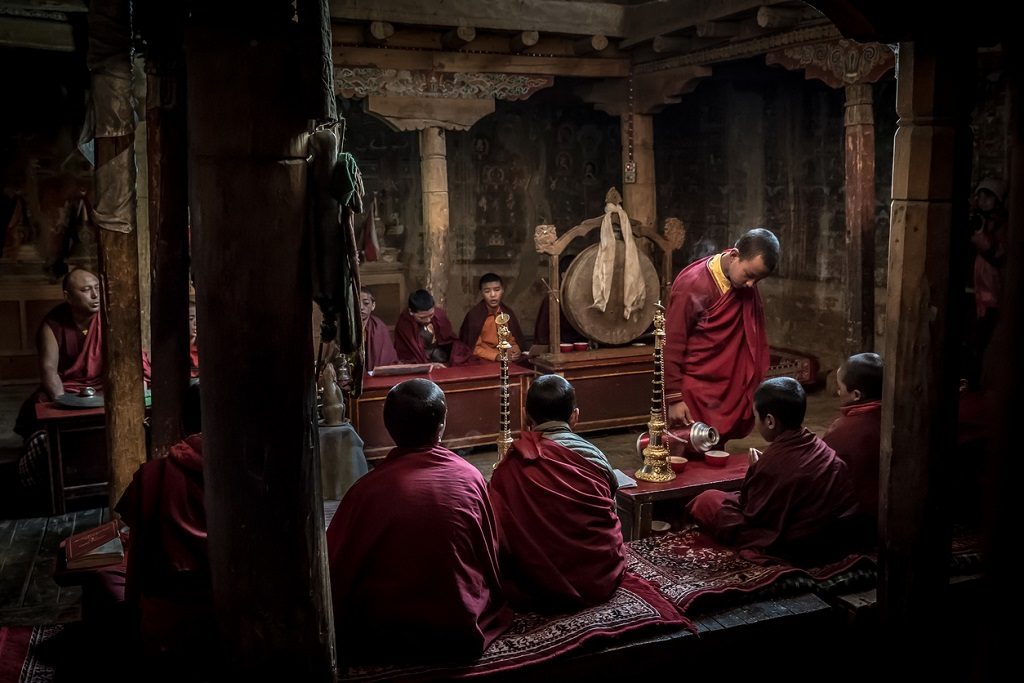
While Tibet remained closed to foreign influence, Ladakh played a major role in the trade of the region. Its markets were filled with traders from across the region leading to a wider range of religions and cultures. While Ladakh itself has faced its fair share of political upheaval, it is also now home to over 3,500 refugees from Tibet.
Acute Mountain Sickness (AMS)
Leh sits at an altitude of 11,480 feet, and so visitors are at risk of AMS due to the low oxygen levels in the area. Gaining altitudes of 9800 feet and above too quickly leaves visitors at the biggest risk. Thus, you should rest and acclimatise upon your arrival to prevent this. There is no way to predict who will get altitude sickness, as it affects the young, the old, the fit and the unfit without discrimination.

Symptoms of AMS usually develop in the first 24 hours at high altitude. Key symptoms of mild AMS include:
- headaches
- lethargy
- dizziness
- nausea
- shortness of breath
- difficulty sleeping
- loss of appetite
Mild AMS can be treated by resting for a few days, drinking plenty of water, and taking a paracetamol or aspirin. However, if symptoms persist, try to descend to a lower altitude. Some physicians recommend taking acetazolamide and dexamethasone (sold as Diamox), but their use is controversial, as while they reduce mild symptoms, they can also mask warning signs in severe cases.
However, without much warning AMS might become more severe, leading to lack of coordination and balance, inability to breathe, confusion, coughing up blood, drowsiness, and eventually unconsciousness. In these cases, be sure to rush the patient to the nearest medical facility lest it becomes fatal.
Also Read: Be Careful What Medication You Take When You Travel
To prevent AMS:
- avoid exertion until you acclimatise, resting for at least 24 hours upon arrival
- ascend slowly, with numerous rest stops; if possible, spend a night or two at each rise of 1000 m
- try to sleep at a lower altitude than heights you may reach during the day
- drink lots of fluids
- eat light, meals that are high in carbohydrates and energy
- avoid alcohol, sedatives, and smoking.
How to get there
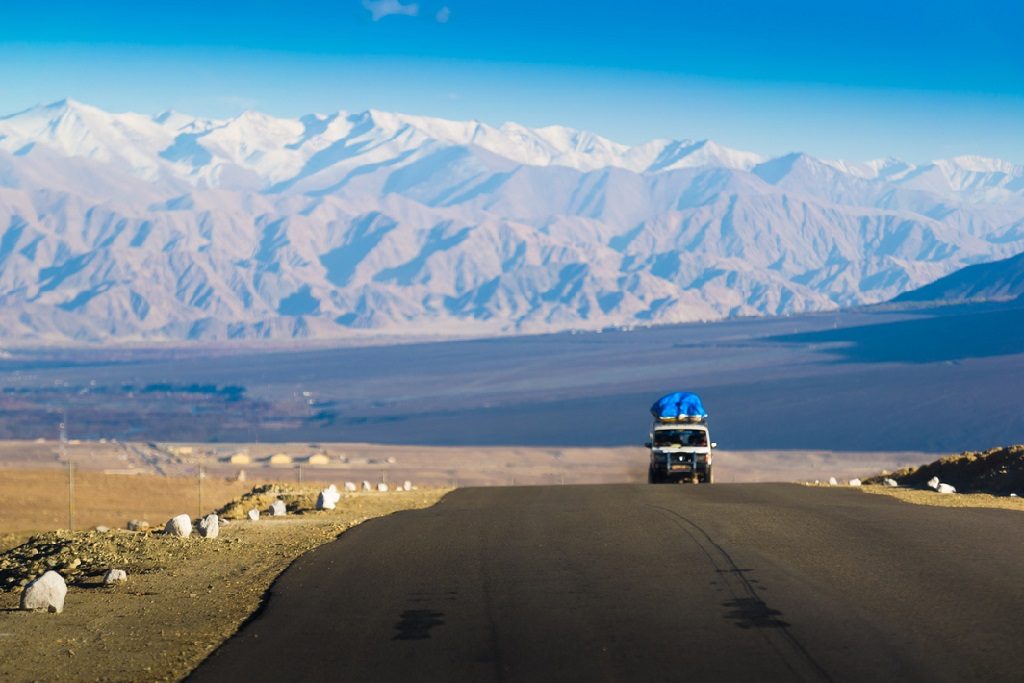 Leh is the largest town in the region of Ladakh, and the main entry point for most visitors. With no railway access, the only way to enter is by air and road, as you can see in our Ladakh travel guide.
Leh is the largest town in the region of Ladakh, and the main entry point for most visitors. With no railway access, the only way to enter is by air and road, as you can see in our Ladakh travel guide.
By Road
Going to Leh is one of the most popular (long) road trips in Northern India, especially among bikers. Most people access Leh via Delhi, and through one of the two mountain roads from Srinagar or Manali, both of which close throughout the winter (October to May) due to heavy snow.
Srinagar to Leh (Delhi – Jammu – Srinagar – Sonmarg – Kargil – Leh)
Going from Srinagar to Leh, you will see the best of the Kashmir Valley before reaching Kargil, the second largest town in Ladakh. Located at 8,780 feet, it provides a gradual ascent, allowing your body to get acclimatised to the altitude. From Kargil, you can also visit the Lamayuru and Alchi monasteries. However, this route is prone to dangerous landslides. So, be sure to check for updates.
Manali to Leh (Delhi – Chandigarh – Manali – Keylong – Sarchu – Leh)
This route is the choice of most visitors, due to the tense political situation in Srinagar. The route passes through the scenic Rohtang Pass, along to Keylong (and the Keylong monastery) and Sarchu, and visitors often spend the night at one of these places. Situated between the Baralacha La and Lachulung La passes, at 14,070 feet (far higher than Leh), it comes with the hazard of altitude sickness. You can check for updates here.
By Bus
Buses run regularly between Leh and Manali and Srinagar. The most numerous of these are the HPTDC and the local HRTC buses. You can also hire a variety of shared taxis from these places, which may be more comfortable. They stop for the night along the way.
By Air
There are daily flights to Ladakh from Delhi and Srinagar run by various airlines. However, they are limited in number and, like the buses, subject to be cancelled due to bad weather. You can also fly to Srinagar and travel from there by road. Keep in mind that flying directly into Leh can also cause altitude sickness due to the sudden change in altitude.
The Best Time to Visit Ladakh
The best time to visit Ladakh is between June and September. During this period, the temperatures are mild, ranging from 3°C to 30°C. It is also when the region comes alive with many vibrant festivals, which are discussed later in this Ladakh travel guide. Some are held at the monasteries, such as the Hemis Festival, while others are held in the towns, such as the Ladakh Festival. Initially held every 12 years, you can also visit the Naropa Festival which is the region’s largest Buddhist Festival.
Also Read: Explore the Hidden Places of Kashmir
Getting around Ladakh
 There are lots of ways to get around Ladakh. As you can see in our Ladakh travel guide, some are more reliable than others.
There are lots of ways to get around Ladakh. As you can see in our Ladakh travel guide, some are more reliable than others.
By bus
In Ladakh, there are buses that run from Leh to the various surrounding villages. However, they are often badly run, disorganised and overcrowded.
By taxi
From Leh, you can also hire a local taxi that will take you to the surrounding monasteries, and even to further off places like Pangong Lake. They are usually faster and more comfortable than public transport, though quite a bit more expensive.
By motorcycle
Instead of a taxi, you can also rent a motorcycle and drive yourself around Ladakh. Rent is quite a bit cheaper, though you should be extremely comfortable on a bike before choosing to do so. Bike rentals can vary based on seasons, however, it’s advisable to compare quotes from multiple Leh bike rental companies to get the best deal. After all, slightly lower per day rentals can result in huge savings over a period of 10 to 15 days of your journey. Also, be sure to check the vehicle for any issues so that you don’t end up stranded in the middle of nowhere. While there are plenty of mechanics in Leh, spare parts are often limited
By truck
Many trucks will stop for hitchhikers going their way. They may ask for a fee, so bargaining may be necessary. However, they are often a very slow form of transport due to the need to load and unload cargo.
By foot
If you have plenty of time, you can hike your way around Ladakh. There are many trails around the region, ranging from beginner to extremely difficult. While you need to visit towns and villages to stock up on supplies, it is best to avoid motor roads, as vehicles often travel at fast speeds. Consider hiring a donkey or a handler to carry some of your baggage. You can also ride a sturdy mountain bike over most trekking routes.
Places to visit in Ladakh
1. Leh Palace
 Looming over Leh is the nine-storey Leh Palace. It was built by the 17th-century Ladakhi king Singge Namgyal but has been unoccupied since the Royals were stripped of power in the 1800s. Resembling Potala Palace in Lhasa, Tibet, it is now a fascinating museum.
Looming over Leh is the nine-storey Leh Palace. It was built by the 17th-century Ladakhi king Singge Namgyal but has been unoccupied since the Royals were stripped of power in the 1800s. Resembling Potala Palace in Lhasa, Tibet, it is now a fascinating museum.
2. Shanti Stupa
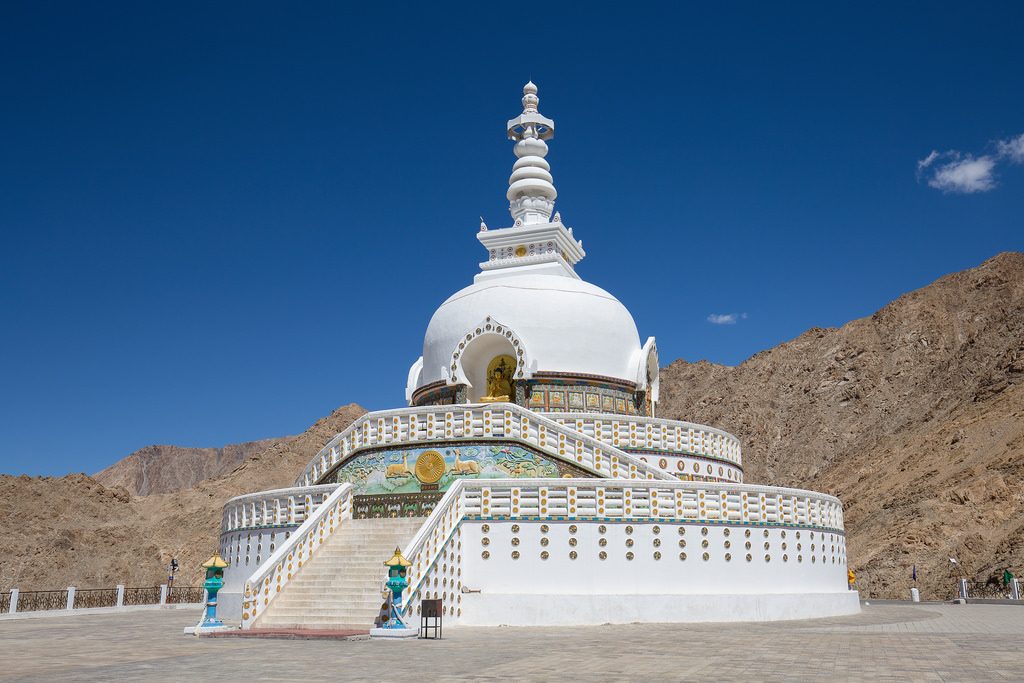 Set on a rocky ridge over Leh is gleaming white Shanti Stupa. It has stunning views of the town and its surroundings, especially at sunset. The stupa was built between 1983 and 1991 by Japanese monks and is meant to promote world peace.
Set on a rocky ridge over Leh is gleaming white Shanti Stupa. It has stunning views of the town and its surroundings, especially at sunset. The stupa was built between 1983 and 1991 by Japanese monks and is meant to promote world peace.
3. Hall Of Fame Museum
 This extensive museum looks at Ladakhi history and culture, with a special focus on commemorating the role of the Indian Army in the region. These include short films on the 1999 Kargil War, to various relief efforts in more recent times. There is also an attached adventure park.
This extensive museum looks at Ladakhi history and culture, with a special focus on commemorating the role of the Indian Army in the region. These include short films on the 1999 Kargil War, to various relief efforts in more recent times. There is also an attached adventure park.
4. Leh Town
 Below Leh Palace lays a mass of winding alleys and stairways covered with picturesque traditional mudbrick Ladakhi houses and chortens (memorial stupas). Many have been recently restored, and between them are a series of cafes, galleries, temples, monasteries, and mosques.
Below Leh Palace lays a mass of winding alleys and stairways covered with picturesque traditional mudbrick Ladakhi houses and chortens (memorial stupas). Many have been recently restored, and between them are a series of cafes, galleries, temples, monasteries, and mosques.
5. Hemis Monastery
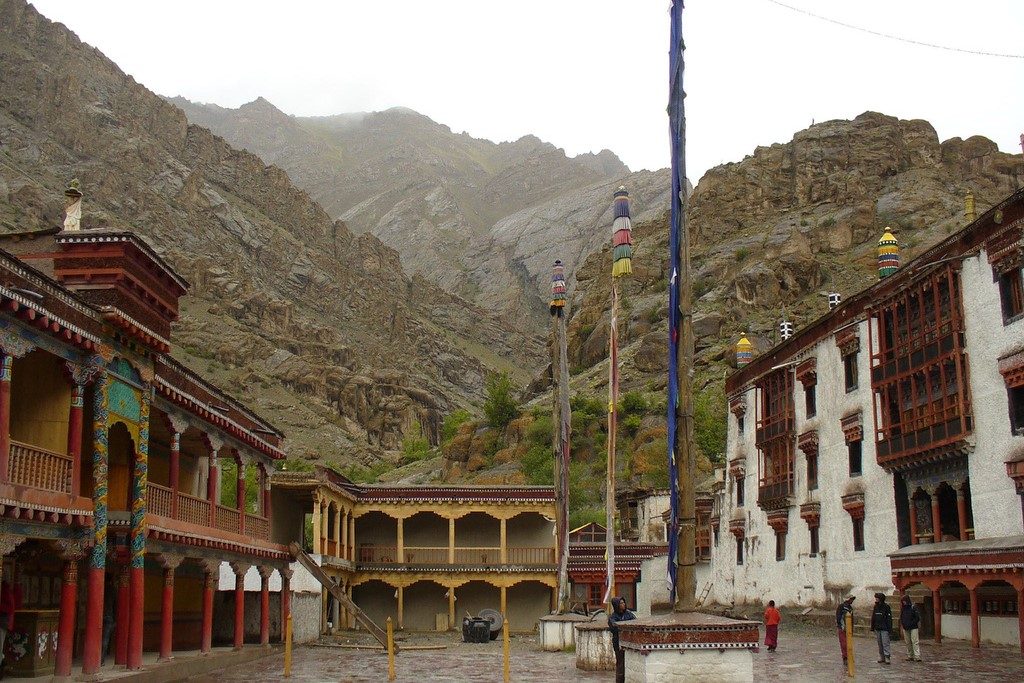 One of the largest monasteries in Ladakh, Hemis is the spiritual centre of the region’s Drukpa Buddhists. Located in a valley hidden by steep rocks, the 17th-century monastery is full of atmospheric buildings. Don’t miss the colourful courtyard, the main prayer hall, and the extensive museum.
One of the largest monasteries in Ladakh, Hemis is the spiritual centre of the region’s Drukpa Buddhists. Located in a valley hidden by steep rocks, the 17th-century monastery is full of atmospheric buildings. Don’t miss the colourful courtyard, the main prayer hall, and the extensive museum.
6. Nubra Valley
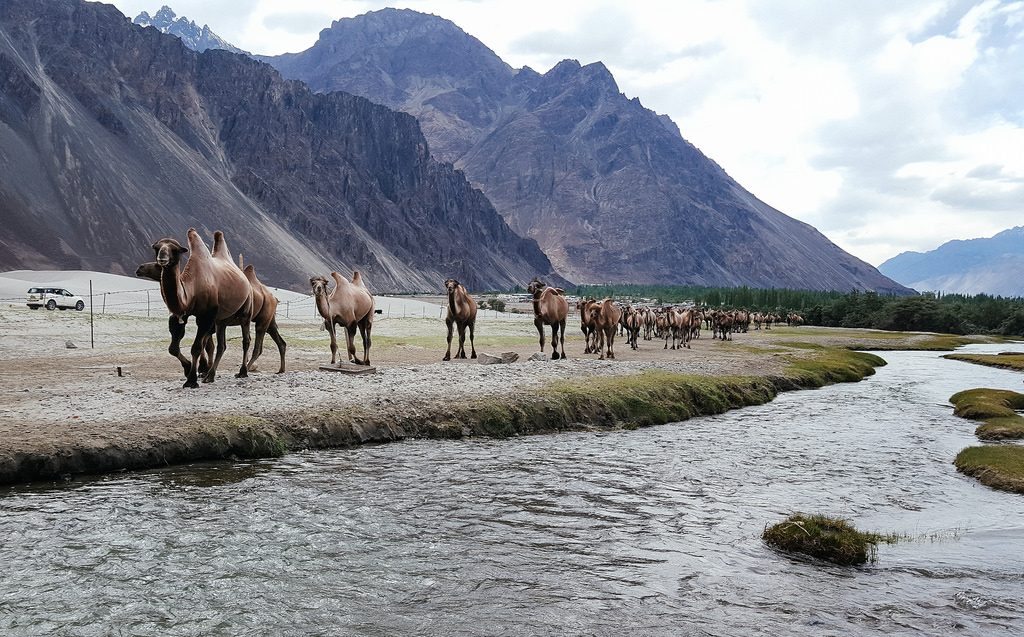 Located near the famous Siachen glacier, Nubra Valley is a popular place for an overnight trip. It lies along the Shyok, a tributary of the Indus, and is full of otherworldly rock landscapes. Vehicles usually make a brief stop at Khardung La which is said to be the world’s highest motorable pass. You can also stop at the nearby Diskit Monastery.
Located near the famous Siachen glacier, Nubra Valley is a popular place for an overnight trip. It lies along the Shyok, a tributary of the Indus, and is full of otherworldly rock landscapes. Vehicles usually make a brief stop at Khardung La which is said to be the world’s highest motorable pass. You can also stop at the nearby Diskit Monastery.
7. Tso Moriri
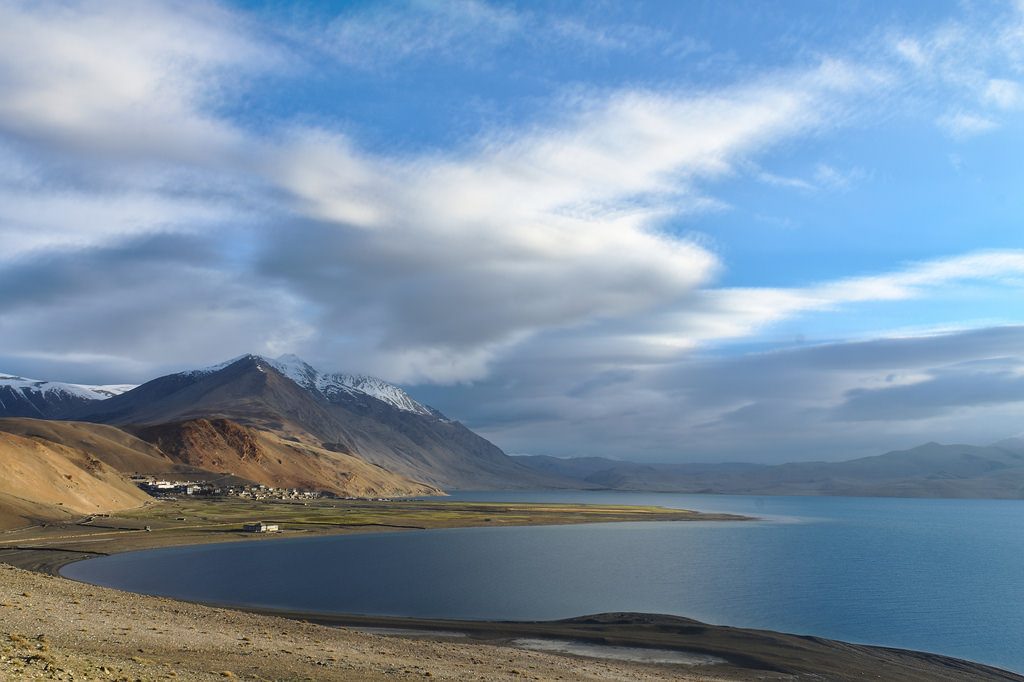 The crystal clear waters of this high altitude lake reflect the majestic mountains the surround it. Tso Moriri is also said to be an excellent location for spotting black-necked cranes. Visit the nearby village of Korzok for stunning views of the lake. You can also stop at the picturesque Likche village and the astronomical observatory at Hanle.
The crystal clear waters of this high altitude lake reflect the majestic mountains the surround it. Tso Moriri is also said to be an excellent location for spotting black-necked cranes. Visit the nearby village of Korzok for stunning views of the lake. You can also stop at the picturesque Likche village and the astronomical observatory at Hanle.
8. Thiksey Monastery
 The stunning Thiksey Monastery is one of Ladakh’s most iconic. Its Tibetan-style buildings cascade down the side of a hill and feature a temple of the Maitreya Buddha as well as a smaller shrine (the gonkhang) and an old library. Respectful visitors can also join or watch the morning prayers here. Don’t miss the museum that’s hidden away beneath the monastery’s restaurant.
The stunning Thiksey Monastery is one of Ladakh’s most iconic. Its Tibetan-style buildings cascade down the side of a hill and feature a temple of the Maitreya Buddha as well as a smaller shrine (the gonkhang) and an old library. Respectful visitors can also join or watch the morning prayers here. Don’t miss the museum that’s hidden away beneath the monastery’s restaurant.
9. Pangong Tso
 The mesmerising Pangong Lake stretches for 150 kilometres near the Chinese border. Its striking and vivid blues were featured in the film 3 Idiots. The ride to the lake, along Chang La pass, is itself visually stunning, passing various meadows, and even the Tangtse Monastery.
The mesmerising Pangong Lake stretches for 150 kilometres near the Chinese border. Its striking and vivid blues were featured in the film 3 Idiots. The ride to the lake, along Chang La pass, is itself visually stunning, passing various meadows, and even the Tangtse Monastery.
Also read: Why Pangong Tso is so enchanting and deserves a visit
10. Spituk Monastery
 Opened in the 14th century, the impressive Spituk Gompa was once small and mysterious. Now, its buildings cover the steep hillside beside Spituk village. Make sure to visit the Skudung Lhakhang structure, the main prayer hall with its statue of Tsongkhapa (the propagator of Gelukpa Buddhism) and the gonkhang, which houses the monastery’s guardian deities.
Opened in the 14th century, the impressive Spituk Gompa was once small and mysterious. Now, its buildings cover the steep hillside beside Spituk village. Make sure to visit the Skudung Lhakhang structure, the main prayer hall with its statue of Tsongkhapa (the propagator of Gelukpa Buddhism) and the gonkhang, which houses the monastery’s guardian deities.
11. Kargil War Memorial
 This war memorial in Dras was built by the Indian Army to commemorate the Kargil War. Located at the foot of Tololing Hill on the Leh-Srinagar road, it features a sandstone wall engraved with the names of fallen soldiers, as well as various exhibits.
This war memorial in Dras was built by the Indian Army to commemorate the Kargil War. Located at the foot of Tololing Hill on the Leh-Srinagar road, it features a sandstone wall engraved with the names of fallen soldiers, as well as various exhibits.
12. Yapola Gorge
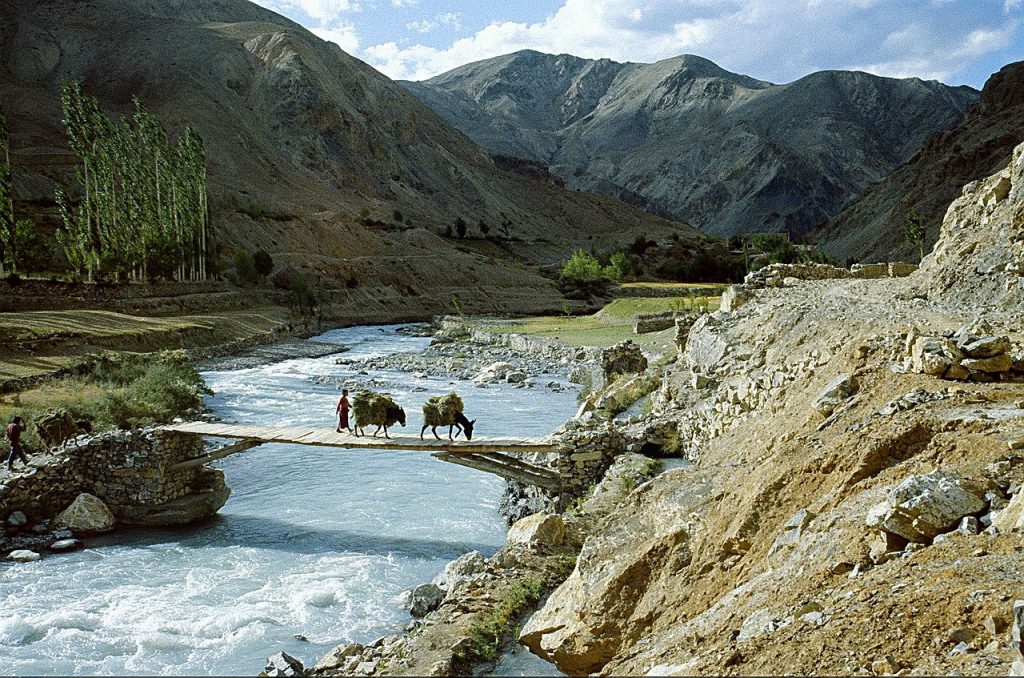 Located near the small town of Phanjila is the spectacular Yapola Gorge. The area is known for its soring rocky sides and for its colourful geological pyrotechnics. You can also stop at the nearby tiny village of Honupatta on the way there or back.
Located near the small town of Phanjila is the spectacular Yapola Gorge. The area is known for its soring rocky sides and for its colourful geological pyrotechnics. You can also stop at the nearby tiny village of Honupatta on the way there or back.
13. Stakna Monastery
This small but picturesque monastery sits atop a rocky outcrop of the Indus River along the Leh–Karu road. Inside you will find a colourful courtyard and various rooms with Tantric murals and figures of the Bhutanese lama Zhabthang Rimpoche.
14. Shey Palace
Shey was once the capital of upper Ladakh, but the present palace is much newer, dating back to the 17th century. It has excellent views of the surrounding countryside, as well as a temple with a massive gilded copper Buddha.
15. Druk Padma Karpo School
This fascinating school is perhaps best known from its role in the Bollywood film 3 Idiot. However, it also features prize-winning buildings filled with sustainable technologies and engineering. You can tour the school and visit its small exhibition area and café.
What To Eat
Ladakhi food is very similar to the more well-known Tibetan fare and is usually based on the region’s staple barley meal. While regular Indian and Chinese food is often available in larger towns like Leh (which also has a vast selection of international fare), be sure to try some regional favourites. These include thukpa (noodle soup), momos (stuffed dumplings), tingmo (unsweetened steamed buns), skyu (vegetable stew with barley noodles), and gurgur cha (traditional salt tea which may also have yak’s butter)
What to Pack for Ladkah
Ladakh is quite cold, even during the summers. It’s always best to dress in layers so you can keep up with the fluctuating temperature (it is quite warm in the sun, and chilly in the shade, for example). Also, make sure to take all your essentials along with you as some things may not be easily available. Here’s our list of this we suggest you pack for Ladakh:
- Cotton or Wool tops to layer with
- Thermal top and pants (if you’re someone who really feels the cold)
- Warm sweaters
- Waterproof windbreakers or winter coats for higher altitudes
- Good quality shoes, or trekking boots (even if you’re not planning on going trekking, the terrain is hilly everywhere)
- Warm socks, gloves, and cap
- Sunglasses and Sunscreen (at least SPF50, as the sun here is very harsh)
- Basic toiletries (most hotels don’t provide these. So, carry everything from toothpaste to shampoo, and moisturiser to sanitary napkins/tampons, wet wipes, and hand sanitizer)
- Medicines like paracetamol and aspirin
- Power banks and extra batteries for all your electrical items and gadgets
Other Information for a Ladakh Travel Guide
Ladakh is one of the safest areas of India, with friendly locals and an exceptionally low crime rate. Much of the region is dotted with military camps, and the Indian Army is a major presence in the area due to its position on the border between India and China. The army is often instrumental in rescue and aid efforts, and you should also be sure to make way for convoys of trucks on narrow mountain roads.
Also keep in mind that Internet connectivity is spotty at best, especially once you move away from Leh. Be sure to inform friends and family just so that they don’t worry. This also means that cards sometimes don’t work in the region and its best to carry cash with you for most transactions.



Thanks for sharing this wonderful blog with step by step information